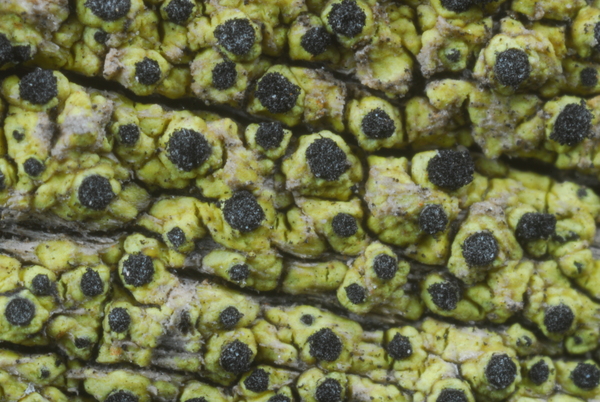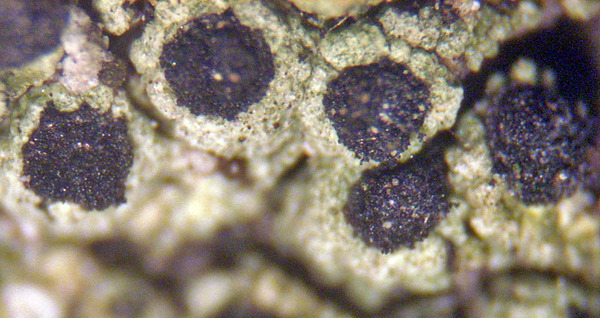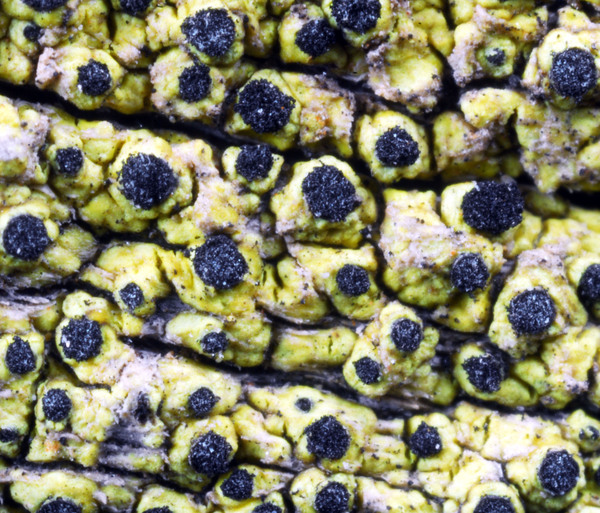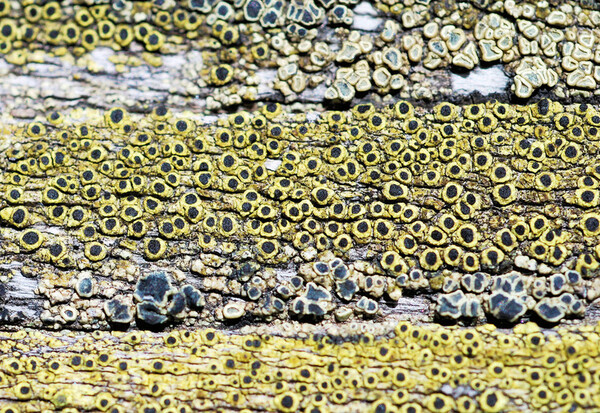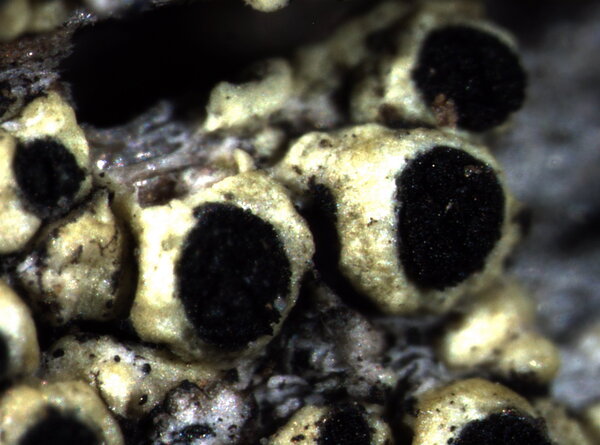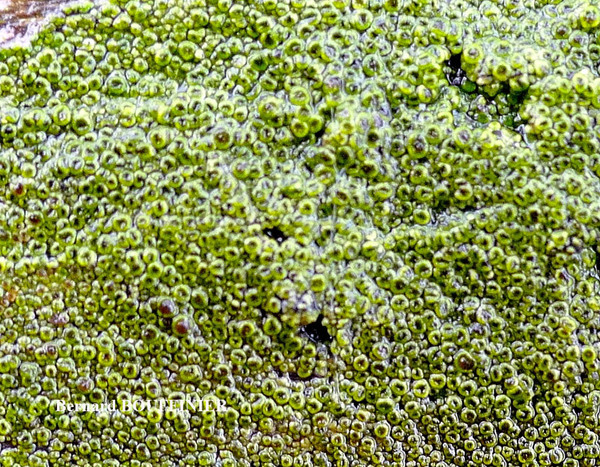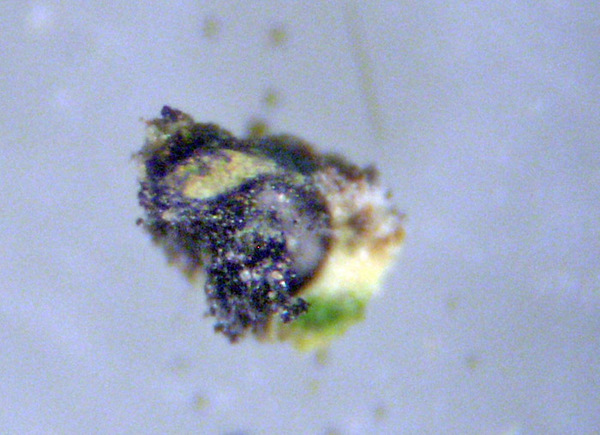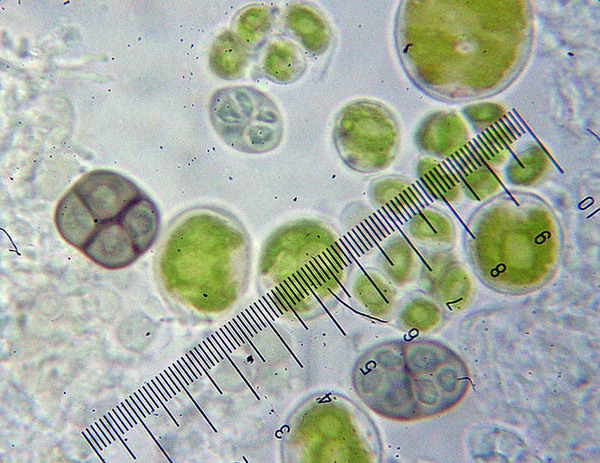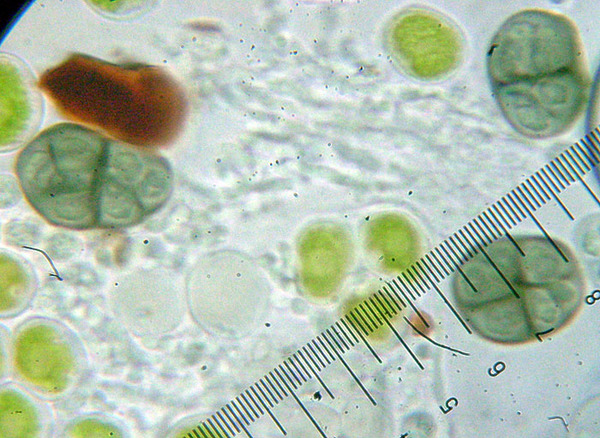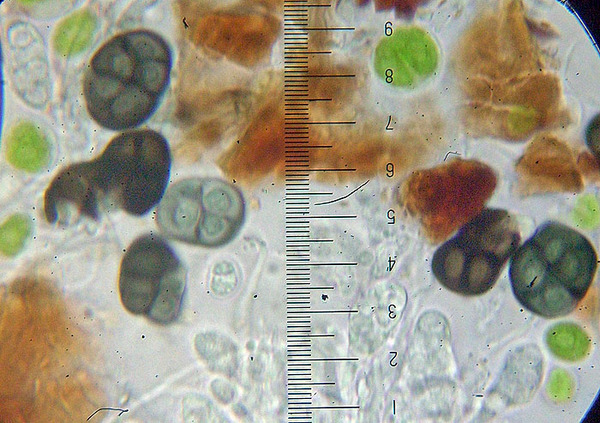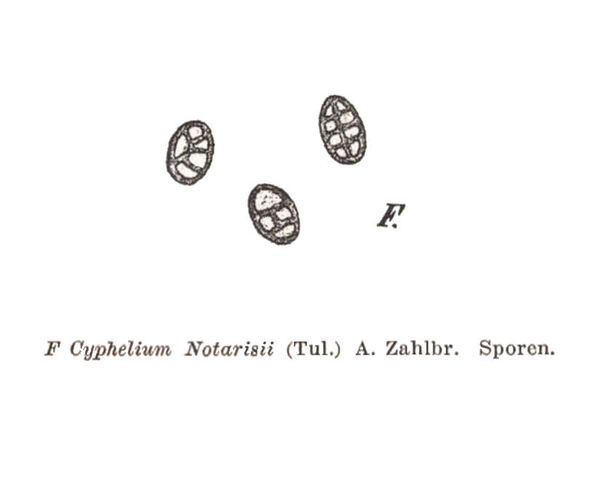Calicium notarisii (Tul.) M. Prieto & Wedin
Fungal Divers., 2016 (MB 817538). Basionym: Acolium notarisii Tul. - Ann. Sc. Nat. Bot., ser. 3, 17: 81, 1852.
Synonyms: Cyphelium notarisii (Tul.) Blomb. & Forssell; Cyphelium sardoum (De Not.) Jatta; Cyphelium tigillare subsp. notarisii (Tul.) W.A. Weber; Embolus sardous De Not.; Trachylia notarisii (Tul.) Nyl.
Distribution: N - Piem (TSB 32805), VA (Piervittori & Isocrono 1999, Matteucci & al. 2008c, Puntillo & Puntillo 2009, Watson 2014). C - Abr (Nimis & Tretiach 1999, Puntillo & Puntillo 2009), Sar (Zedda 2002, 2002b, Puntillo & Puntillo 2009, Rizzi & al. 2011, Di Nuzzo & al. 2022). S - Cal (CLU 17604).
Description: Thallus crustose, episubstratic, continuous to usually verrucose, bright yellow-green. Cortex densely inspersed with yellow crystals, the uppermost part with a hyaline layer. Apothecia immersed in 0.5-0.8 mm wide thalline warts, 0.2-0.5 mm across, covered with a black, epruinose mazaedium. Exciple 14-34 µm thick laterally, not or only slightly thickened at base, of intricately interwoven, brown, sclerotized hyphae with thickened walls; hypothecium very thin, poorly pigmented, Asci ellipsoid to pyriform, rupturing at a very early stage, with 2-3 seriate spores. Ascospores at first 1-septate, then submuriform with oblique septa, brown, broadly ellipsoid or irregular in outline, constricted at septa, 17-24 x 13-18 µm, with 2-14 cells. Pycnidia black, confluent. Conidia 1-celled, hyaline, cylindrical or ellipsoid. Photobiont chlorococcoid. Spot tests: thallus K-, C-, KC-, P-. Chemistry: thallus with rhizocarpic acid.Note: a mainly cool-temperate to southern boreal-montane lichen found on dry, weathered wood (e.g. on fences, wooden poles), but also on bark of old acid-barked trees (especially Quercus). Widespread, but rare, from the Alps to the mountains of Sardinia. It is included in the Italian red list of epiphytic lichens as “Vulnerable” (Nascimbene & al. 2013c).
Growth form: Crustose
Substrata: bark and lignum
Photobiont: green algae other than Trentepohlia
Reproductive strategy: mainly sexual
Commonnes-rarity: (info)
Alpine belt: absent
Subalpine belt: absent
Oromediterranean belt: absent
Montane belt: very rare
Submediterranean belt: absent
Padanian area: absent
Humid submediterranean belt: absent
Humid mediterranean belt: absent
Dry mediterranean belt: absent

Predictive model
Herbarium samples
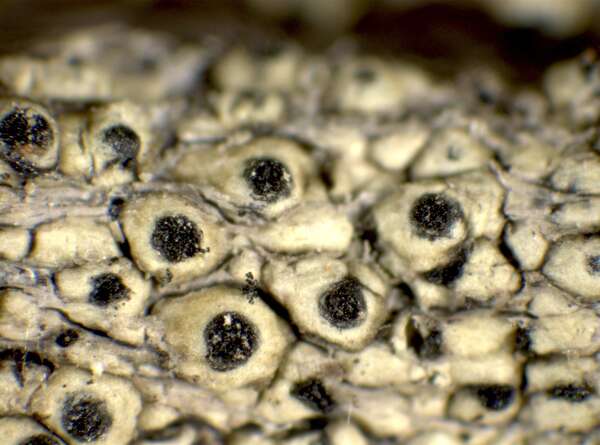

P.L. Nimis; Owner: Department of Life Sciences, University of Trieste
Herbarium: TSB (24317)
2001/12/08
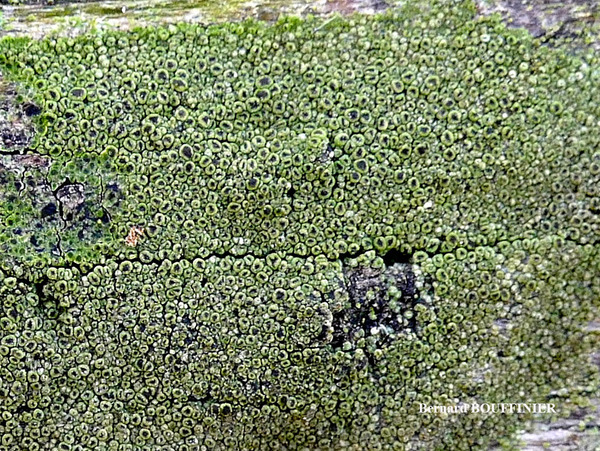
Bernard Bouffinier - Source: http://www.lichensmaritimes.org/index.php?task=fiche&lichen=825&lang=en
France, Douarnen
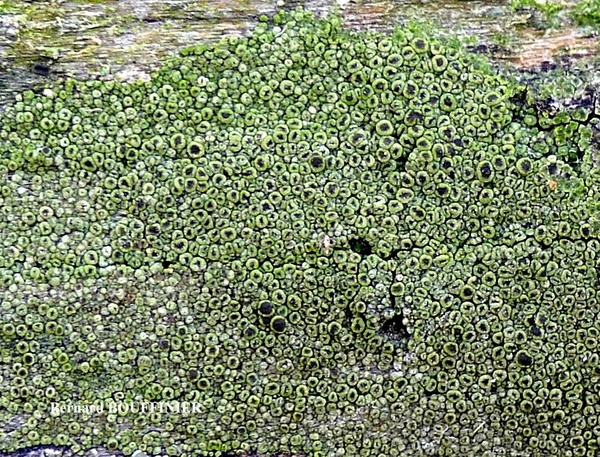
Bernard Bouffinier - Source: http://www.lichensmaritimes.org/index.php?task=fiche&lichen=825&lang=en
France, Douarnen
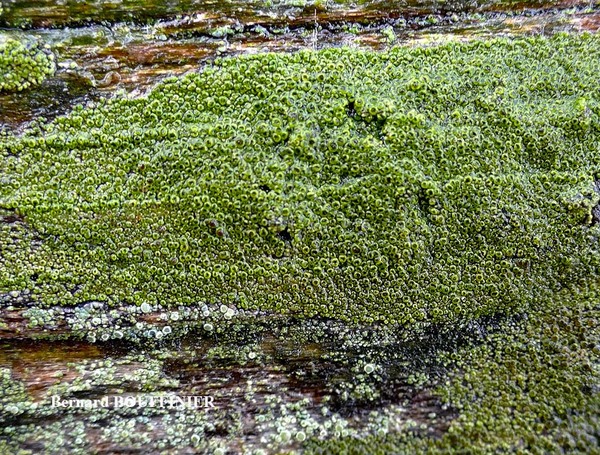
Bernard Bouffinier - Source: http://www.lichensmaritimes.org/index.php?task=fiche&lichen=825&lang=en
France, Douarnen
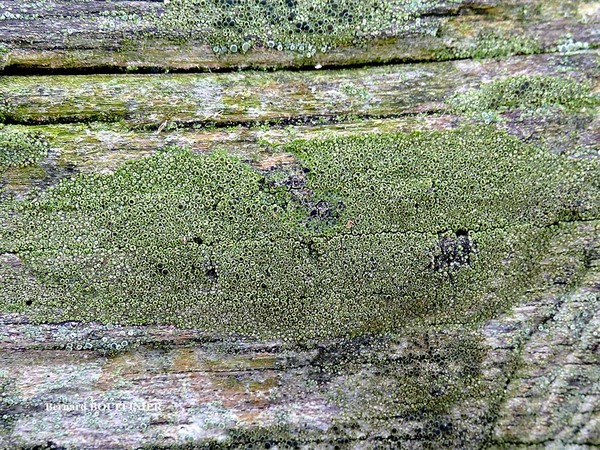
Bernard Bouffinier - Source: http://www.lichensmaritimes.org/index.php?task=fiche&lichen=825&lang=en
France, Douarnen
Growth form: Crustose
Substrata: bark and lignum
Photobiont: green algae other than Trentepohlia
Reproductive strategy: mainly sexual
Commonnes-rarity: (info)
Alpine belt: absent
Subalpine belt: absent
Oromediterranean belt: absent
Montane belt: very rare
Submediterranean belt: absent
Padanian area: absent
Humid submediterranean belt: absent
Humid mediterranean belt: absent
Dry mediterranean belt: absent

Predictive model
| Herbarium samples |


P.L. Nimis; Owner: Department of Life Sciences, University of Trieste
Herbarium: TSB (24317)
2001/12/08

Bernard Bouffinier - Source: http://www.lichensmaritimes.org/index.php?task=fiche&lichen=825&lang=en
France, Douarnen

Bernard Bouffinier - Source: http://www.lichensmaritimes.org/index.php?task=fiche&lichen=825&lang=en
France, Douarnen

Bernard Bouffinier - Source: http://www.lichensmaritimes.org/index.php?task=fiche&lichen=825&lang=en
France, Douarnen

 Index Fungorum
Index Fungorum
 GBIF
GBIF
